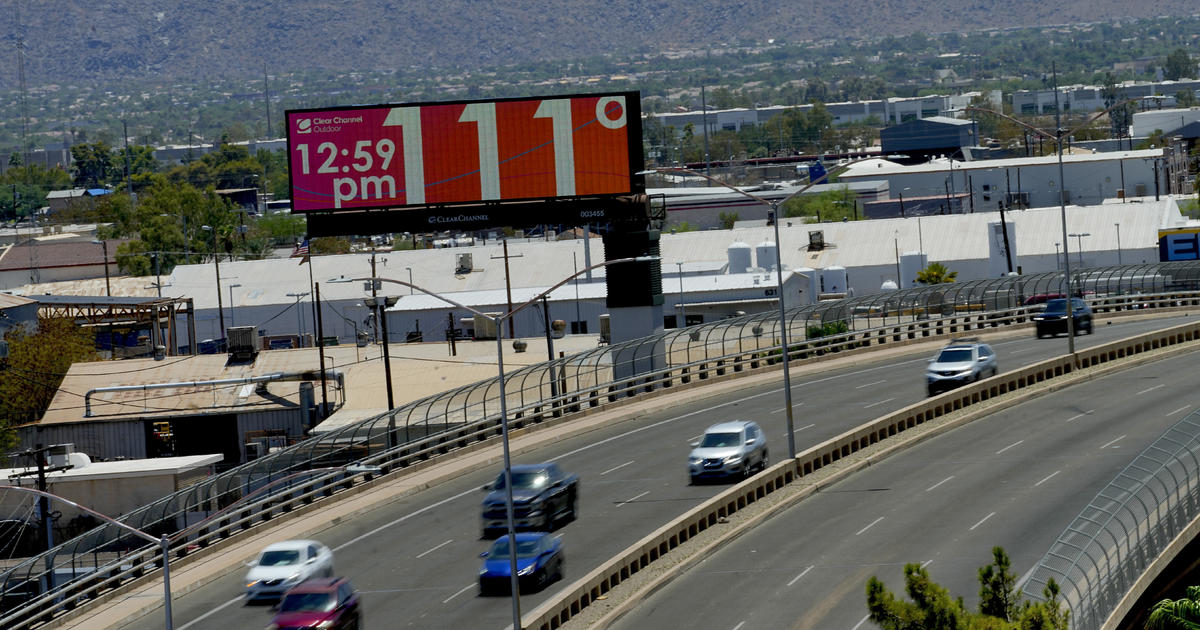Phoenix’s scorching heat wave continues to break records, with temperatures soaring to 110 degrees Fahrenheit or higher for 19 consecutive days. Even nighttime offers little relief, as the city experienced its highest overnight low ever at 95 degrees, surpassing the previous record of 93 degrees. This prolonged heat wave, exacerbated by climate change, poses a significant health risk to the population.
National Weather Service meteorologist Matt Salerno describes the situation as “pretty miserable” when there’s no overnight recovery from the extreme temperatures. Katharine Jacobs, director of the Center for Climate Adaptation Science and Solutions at the University of Arizona, warns that long-term exposure to heat is more challenging to endure than single hot days, especially when the nights do not provide enough cooling for quality sleep. David Hondula, the chief heat officer for the City of Phoenix, anticipates an increase in deaths and illness during this heat wave and emphasizes the city’s goal to prevent such outcomes.
The relentless heat wave in Phoenix is remarkable, even in a summer marked by record-breaking temperatures globally. Weather historian Christopher Burt states that no other major U.S. city has witnessed a streak of 110-degree days or 90-degree nights as long as Phoenix’s. Although smaller locations like Death Valley, Needles in California, and Casa Grande in Arizona have experienced longer streaks, the severity of Phoenix’s situation should not be ignored.
The combination of long-term climate change and a persistent high-pressure system known as a heat dome contributes to Phoenix’s heat wave. Randy Cerveny of Arizona State University explains that increasing temperatures due to human influence on climate, along with the recent prolonged presence of a strong upper-level ridge of high pressure over the western United States, are the main causes. The heat dome’s center has shifted to concentrate over Phoenix, intensifying the heat wave.
The southwestern region, including Phoenix, has been trapped under the heat dome, resulting in temperature records being broken from California to Florida. The high-pressure system also prevents rainfall and clouds from providing relief. Although the monsoon season typically brings rain and cloud cover around mid-June, Phoenix has not experienced measurable rain since mid-March, exacerbating the intensity and duration of the heat wave.
Phoenix’s average daily summer temperatures have been steadily rising since 1983. NOAA data shows an increase of 3.6 degrees in average daily summer temperature, 3.2 degrees in daily high temperature, and 4.4 degrees in nighttime low temperature. Urban heating and the changing climate worsen the frequency and intensity of these temperatures.
Heat waves pose a deadly threat, particularly to vulnerable groups such as the homeless, outdoor workers, and those without adequate access to air conditioning and hydration. Indian Country is disproportionately affected, with Hopi and Navajo reservations lacking running water, air conditioning, and access to cooling centers. Dr. Jonathan Patz from the University of Wisconsin-Madison highlights the urban heat island effect, which disproportionately affects communities of color and low-income individuals due to a lack of trees and green spaces.
Phoenix’s predominantly Hispanic neighborhoods and historically Black neighborhoods face higher temperatures due to limited tree canopy and urban development. Efforts are underway to study and address the heat-related issues in these communities through redevelopment and better protection.
As the heat wave continues, it is crucial to prioritize the health and well-being of all individuals, particularly those most at risk. Climate change mitigation and adaptation strategies are necessary to address the increasing severity and frequency of heat waves.
Denial of responsibility! VigourTimes is an automatic aggregator of Global media. In each content, the hyperlink to the primary source is specified. All trademarks belong to their rightful owners, and all materials to their authors. For any complaint, please reach us at – [email protected]. We will take necessary action within 24 hours.


